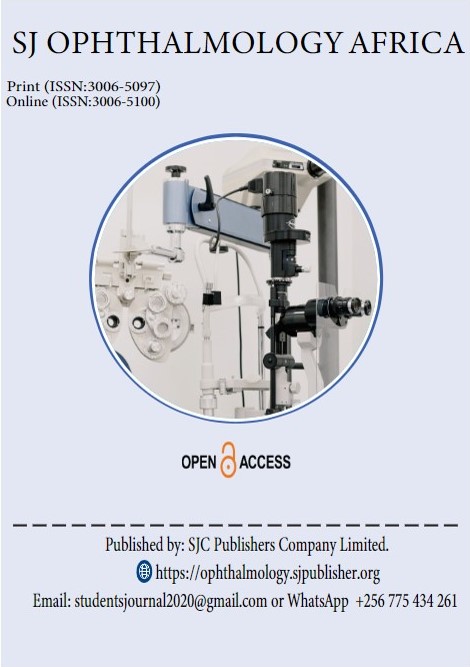PREVALENCE, INCIDENCES AND MANAGEMENT PRACTICES OF OPHTHALMIC EMERGENCIES; A CROSS-SECTIONAL STUDY IN JINJA REGIONAL REFERRAL HOSPITAL.
DOI:
https://doi.org/10.51168/hmveq993Keywords:
Prevalence, Incidences, Management Practices, Ophthalmic Emergencies, Jinja Regional Referral HospitalAbstract
Introduction
This study was aimed at establishing the prevalence of ophthalmic emergencies, determining the common incidences of ophthalmic emergencies, and establishing the common management practices of ophthalmic emergencies at Jinja Regional Referral Hospital. This study was carried out at the eye department of Jinja Regional Referral Hospital, Jinja City Busoga region
Methodology
It employed a descriptive cross-sectional study design that employed both qualitative and quantitative methods of data collection from a sample size of 100 using a self-administered questionnaire. Data was analyzed manually and presented in tables and figures.
Results
The study showed that 43(43%) of the respondents were 10-20 years old and 60(60%) of them were males. Most of the respondents affected 42(42%) were those who were working in industries, factories, and welding. The most common ophthalmic emergency incidences were open globe injuries 72(72%) and mostly corneal foreign bodies 42(42%). The common management options for ophthalmic emergencies present at JRRH were both topical and systemic antibiotics, anti-fungal anti-viral drugs depending on the cause of the illness; surgery; topical or systemic steroids to reduce inflammation in the eye; anti-glaucoma drugs to reduce IOPs and referral
Conclusion
The study concluded that the common age group affected by ophthalmic emergencies is 10-20 years and mostly males are affected and with those working, it was mostly welders, those working in industries, factories, and peasants.
Recommendations
The government, Ophthalmologists, ophthalmic clinical officers, and ophthalmic nurses should play their roles to address the challenges in service delivery to reduce ophthalmic emergencies or even avoid complications of ophthalmic emergencies
Downloads
Published
Issue
Section
License
Copyright (c) 2024 Martha Mudondo , Jonathan Kitanda (Author)

This work is licensed under a Creative Commons Attribution-NonCommercial-NoDerivatives 4.0 International License.

